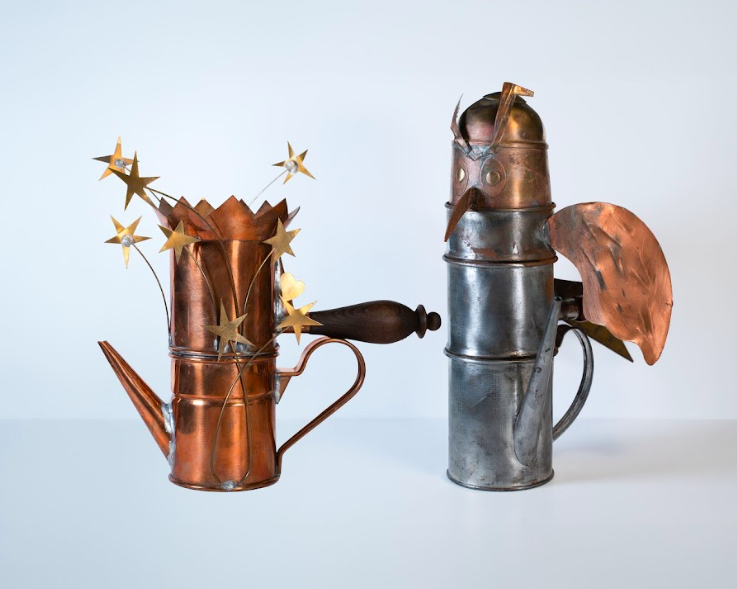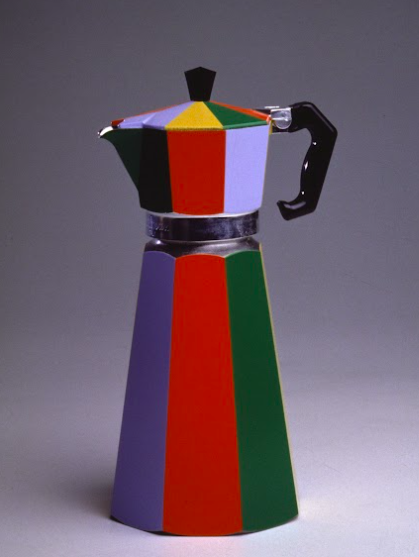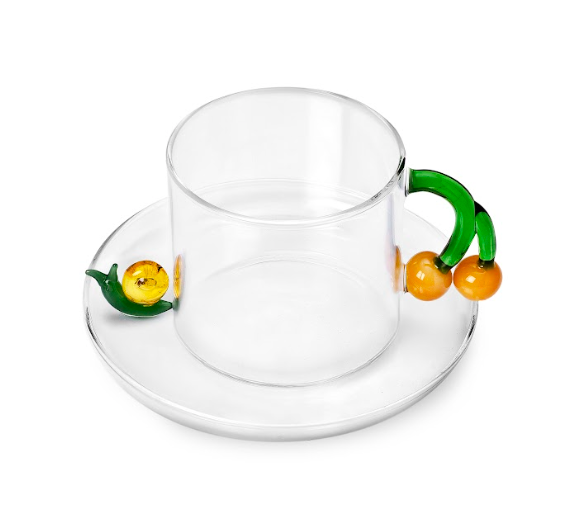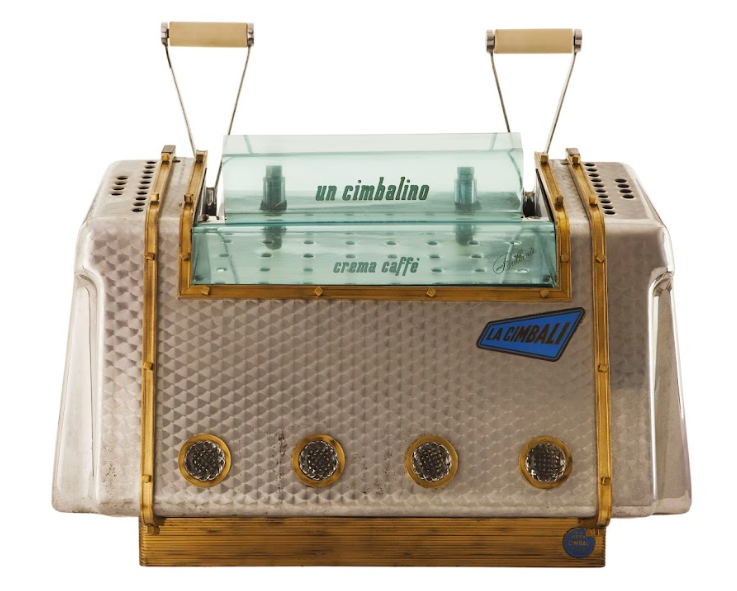There is no doubt that the Italian's passion for espresso is unmatched around the globe. And Brazil produces the coffee that makes those espressos possible! So it does actually make sense that an exhibition of artistic espresso machines is happening in Sao Paolo, though the connection might not be immediately available. Just look at how beautiful some of these pieces are!
The all-Italian passion for espresso is at the centre of a double exhibition in Brazil, curated by Elisabetta Pisu, which recounts the evolution over time of the design and technology of coffee artefacts, linking to the history of Italian emigration to Brazil which in 2024 celebrates its 150th anniversary.
60 machines for domestic and bar use, coffee sets and cups are on display in the two stages of Passione italiana: l’arte dell’espresso from 1 October 2024 to 4 February 2025 at Museu do Café, the Santos Coffee Museum and from 21 February 2025 to May 26 2025 at Museu da Imigração do Estado de São Paulo, the São Paulo State Immigration Museum.
The exhibition develops according to two exhibition nuclei, which construct a layered and richly nuanced narrative of the history of coffee.
A historical exhibition itinerary recounts the evolution over time of innovations linked to the machines and consumption habits of coffee, guided by the ingenuity of creatives at the service of incessant research over time, to raise the quality of the drink, improve its flavour and aroma and optimise production processes.
In addition to the historical narrative, the exhibition presents a series of thematic insights, which analyse the vast social meaning of the most consumed drink in the world through the places, domestic rituals and designers who have most influenced the habits and collective imagination, including: historic cafés in Italy; the bar and the Italian way of life; the aesthetic evolution of the moka pot; the Neapolitan coffee maker and Riccardo Dalisi; Aldo Rossi's design between architecture and domestic landscape; the coffee ritual at home; Alessi's Tea & Coffee Piazza and Towers.

Prototipi di latta Neapolitan coffee maker, Riccardo Dalisi, 1979-1987, Alessi - Courtesy EP Studio
Particular importance in the exhibition Passione italiana: l’arte dell’espresso is given to the link with the history of Italian emigration to Brazil - which in 2024 celebrates its 150th anniversary - which is at the origin of a vast and widespread penetration of coffee in the South American country.
“The history of the Brazilian coffee industry is inextricably linked to the phenomenon of Italian migration to Brazil,” explains Domenico Fornara, consul general of Italy in São Paolo, “the million and a half Italians who disembarked in Brazilian territory starting in 1870 worked mainly in companies of coffee producers and it is precisely thanks to the inestimable importance of the Italian workforce that coffee, from a typically Italian national symbol, has been transformed into an element that has forever linked two peoples and two cultures”
Italy is the third largest importer of Brazilian coffee in the world, after the United States and Germany, so Brazilian coffee is the basis of most of the espresso blends prepared every day by over a thousand Italian roasters, this testifies to the strong bond between our country and Brazil.
“The selection of objects on display speaks of Italian creativity and the drive for innovation, which have always characterized Made in Italy design’” explains the curator Elisabetta Pisu, “but it also tells us much more, it tells us about Italians in Brazil, about how our culture has been the bearer of new habits and has inaugurated a social ritual overseas, a symbol of our country. Together with this, the exhibition highlights the strong bond between Italy and Brazil, a mutual relationship that has fully engaged the business world as much as love for espresso coffee.”
These works represent the temporal evolution of production and consumption and reveal how the social importance of a daily custom has grown in the collective imagination which today is inextricably linked to Italian lifestyle and our social rituals.
The objects on display trace a historical path that spans the last two centuries, including coffee makers born from the genius of great designers which have become true icons of an era, together with more recent pieces resulting from technological innovations, which have radically transformed the production processes, at the same time as raising quality standards.
The itinerary proposed in the exhibition Passione italiana: l’arte dell’espresso is shaped as a fascinating journey through time, which speaks of incessant research aimed at perfecting the technology, the ergonomics of the objects and the experience of consuming one of the world's most widespread and much loved drinks.
The exhibition presents 60 objects, many of which are rare and unique pieces, which bear the signatures of some of the greatest artists and masters of design, both Italian and international, as well as the most prestigious Made in Italy brands. These masterpieces of design iconography, the result of an in-depth creative reinterpretation of forms and functions, have marked an era.
Among these pieces there is no shortage of iconic works such as the caffettiera Oggetto banale by Alessandro Mendini (pictured below), created for the 1980 Venice Biennale or the “towers” of the set designed by Massimiliano Fuksas and Doriana Mandrelli for Alessi which, together with La Conica and La Cupola by Aldo Rossi, also produced by Alessi, mark the meeting between architecture and design, managing to transform the coffee set into a miniature piazza and elevating the domestic object into a sort of cathedral.

Among the objects on display are some Alessi productions, such as the 9090 espresso coffee maker by Richard Sapper and the Pulcina by Michele De Lucchi, the Neapolitan coffee maker 90018 and the tin Prototypes by Riccardo Dalisi. Also on display is the series of illy Art Collection cups, decorated by contemporary artists such as the cup In Principio – Brasile by Sebastião Salgado, who photographed moments of the activities of coffee farmers.

Fruits & Flowers Collection coffee cup, Alessandra Baldereschi, 2021, Ichendorf Milano - Courtesy Ichendorf Milano
The exhibition also highlights the technological development of the sector with historic bar machines, coming from the collection of MUMAC, Museo della Macchina per Caffè di Cimbali Group, which retrace the evolution of an entire Made in Italy sector, from a point of view of the design and engineering genius that led to an increase in the quality standards of the drink.

Among the models on display are the Snider Insuperabile, an example of an Art Nouveau steam column machine produced in 1920, the Gaggia Tipo Spagna in the 1952 with the revolutionary invention of natural cream and the Cimbali Brillante, among the first with lever dispensing group, also produced in the same year, for the dispensing of “cimbalino”, the name given to the coffee produced by the company’s machines.
Furthermore, domestic espresso coffee machines worthy of mention include the lever model produced by La Pavoni in 2023, the 1950s style ECF02, designed by Matteo Bazzicalupo and Raffaella Mangiarotti in 2023 by Smeg and the Diva, designed by Andreas Seegatz, produced by Bugatti.
The exhibition was created in collaboration with the Consulate General of Italy in São Paolo and the Institute for the Preservation and Dissemination of the History of Coffee and Immigration.